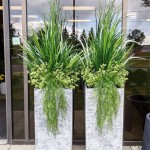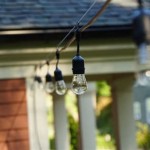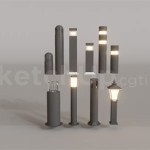How To Build A Fieldstone Outdoor Fireplace
An outdoor fireplace constructed from fieldstone serves as a focal point in any backyard landscape. The natural variation in color and texture of fieldstone provides a rustic aesthetic, blending seamlessly with outdoor settings. Constructing a fieldstone fireplace requires careful planning, a solid foundation, and mastery of mortaring techniques to ensure a durable and safe structure. The following guide outlines the steps involved in building a fieldstone outdoor fireplace.
Planning and Preparation
Before commencing construction, meticulous planning is essential. This involves assessing the location, obtaining necessary permits, and gathering the required materials. Proper planning mitigates potential issues and ensures a smooth construction process.
The first step involves selecting a suitable location for the fireplace. Consider factors such as prevailing winds, proximity to combustible materials (e.g., trees, fences, or overhanging structures), and accessibility for material delivery. The ideal location provides adequate space for construction and allows for safe operation of the fireplace.
Most jurisdictions require permits for building permanent outdoor structures, including fireplaces. Contact the local building department to determine permit requirements and zoning restrictions. Obtain the necessary permits before initiating any construction activities to avoid potential fines or legal complications.
A comprehensive material list is crucial for efficient project management. This includes fieldstone (in sufficient quantities to construct the fireplace), firebrick (for lining the firebox), mortar (specifically designed for masonry applications), chimney flue liners, concrete mix (for the foundation), rebar (for reinforcing the foundation), and various tools and safety equipment. Accurate material estimation prevents delays caused by material shortages during construction.
Constructing the Foundation
A stable and level foundation is paramount for the longevity and structural integrity of the fieldstone fireplace. The foundation must be capable of supporting the weight of the fireplace and withstanding ground movement caused by frost heave or soil settlement.
Begin by excavating the area for the foundation to a depth appropriate for the local frost line. The frost line indicates the deepest point in the ground that is expected to freeze during the winter. The foundation footing must extend below the frost line to prevent movement caused by freezing and thawing cycles.
Construct a wooden form to define the perimeter of the foundation. The form should be square and level, ensuring a solid base for the concrete. Reinforce the form with stakes to prevent it from shifting during the concrete pouring process.
Place rebar within the form to reinforce the concrete foundation. The rebar should be arranged in a grid pattern, providing tensile strength to the concrete and preventing cracking. Ensure the rebar is properly spaced and secured within the form.
Mix concrete according to the manufacturer's instructions, ensuring the proper water-to-cement ratio. Pour the concrete into the form, filling it to the top. Use a concrete vibrator to consolidate the concrete and remove air pockets. Level the surface of the concrete using a screed board.
Allow the concrete foundation to cure for at least seven days before commencing further construction. Keep the concrete moist during the curing process to prevent cracking. Covering the foundation with plastic sheeting can help retain moisture and promote proper curing.
Building the Fireplace Structure
Once the foundation has cured, construction of the fireplace structure can begin. This involves laying the fieldstone, mortaring the stones together, and incorporating firebrick to create the firebox.
Begin by laying the first course of fieldstone along the perimeter of the foundation. Select stones that are relatively flat and uniform in size to ensure a stable base. Dry-fit the stones to determine their placement before applying mortar.
Mix mortar according to the manufacturer's instructions, ensuring the proper consistency for masonry applications. Apply a thick layer of mortar to the foundation and the back of the stones, pressing the stones firmly into place. Use a trowel to remove excess mortar and create a clean, professional finish.
Continue laying courses of fieldstone, staggering the joints between each course to create a strong and visually appealing structure. Use a level to ensure that each course is level and plumb. Incorporate larger stones for structural support and visual interest.
As the fireplace structure rises, begin constructing the firebox using firebrick. Firebrick is designed to withstand high temperatures and prevent damage to the surrounding fieldstone. Lay the firebrick in a herringbone pattern or other suitable arrangement, ensuring a tight and secure fit.
Mortar the firebrick together using fireclay mortar, which is specifically designed for high-temperature applications. Ensure the firebox is properly sealed to prevent smoke and gases from escaping into the surrounding structure.
Install chimney flue liners as the fireplace structure rises. The flue liners provide a smooth and consistent path for smoke and gases to escape. Ensure the flue liners are properly sized for the fireplace and comply with local building codes.
Continue building the fireplace structure to the desired height, incorporating features such as a smoke chamber, damper, and chimney cap. The smoke chamber directs smoke and gases into the chimney, while the damper controls airflow and prevents drafts. The chimney cap prevents rain and debris from entering the chimney.
Mortaring Techniques
Proper mortaring techniques are crucial for the strength and appearance of the fieldstone fireplace. The mortar should be applied consistently and neatly, creating a durable and visually appealing finish.
Use a pointing trowel to fill the joints between the fieldstones with mortar. Apply the mortar in multiple layers, pressing it firmly into the joints to ensure a tight and secure bond. Strike the mortar joints with a jointer tool to create a consistent and professional finish. Several joint styles are possible, including concave, flush, and grapevine.
Remove excess mortar from the surface of the fieldstone using a brush or sponge. Avoid smearing the mortar onto the stones, as this can detract from the natural beauty of the fieldstone. Clean the stones thoroughly to remove any mortar residue.
Allow the mortar to cure for at least 72 hours before exposing the fireplace to the elements. During the curing process, protect the mortar from rain and direct sunlight. Keeping the mortar moist can help promote proper curing and prevent cracking.
Consider using colored mortar to enhance the appearance of the fieldstone fireplace. Colored mortar can complement the natural tones of the fieldstone and create a unique and visually appealing finish. Experiment with different mortar colors to find the perfect match for the fieldstone.
For a more rustic look, consider using a technique called "tuck pointing." Tuck pointing involves creating artificial mortar joints by applying a thin layer of mortar and then scoring it to create the appearance of separate stones. This technique can add depth and texture to the fieldstone fireplace.
Safety Considerations
Constructing and operating an outdoor fireplace involves inherent safety risks. Adhering to safety precautions throughout the construction process and during operation is critical to prevent accidents and injuries.
Wear appropriate safety gear during construction, including safety glasses, gloves, and a dust mask. Safety glasses protect the eyes from debris, gloves protect the hands from cuts and abrasions, and a dust mask protects the lungs from harmful dust and particles.
Use caution when lifting heavy fieldstones. Lift with your legs, not your back, to prevent back injuries. If a stone is too heavy to lift safely, use a dolly or other lifting device.
Ensure that the fireplace is located in a safe and well-ventilated area. Keep combustible materials away from the fireplace and never leave a fire unattended. Have a fire extinguisher or water hose readily available in case of emergency.
Inspect the fireplace regularly for cracks, loose stones, or other signs of damage. Repair any damage promptly to prevent structural failures or fire hazards. Have the fireplace professionally inspected and cleaned annually to ensure safe operation.
Educate all members of the household about the safe operation of the fireplace. Instruct children about the dangers of fire and supervise them closely when they are near the fireplace. Follow all local fire regulations and burn bans.

Stonetutorials Living Stone Masonry

How To Build An Outdoor Stacked Stone Fireplace

How To Build An Outdoor Fireplace Step By Guide Buildwithroman

Stonetutorials Living Stone Masonry

How To Build An Amazing Diy Fire Pit Without Breaking The Bank

How To Build An Outdoor Fireplace Today S Creative Life

Build A Stone Fireplace Resources To Help You Stack It Up Outdoors
:max_bytes(150000):strip_icc()/milkpaint-286c9ee63b604ca1aaecac5233c8a3f3.jpg?strip=all)
10 Free Outdoor Fireplace Construction Plans

Fireplace Outdoor Stone Fireplaces Build Backyard

How To Build An Outdoor Fireplace Step By Guide Buildwithroman
Related Posts







